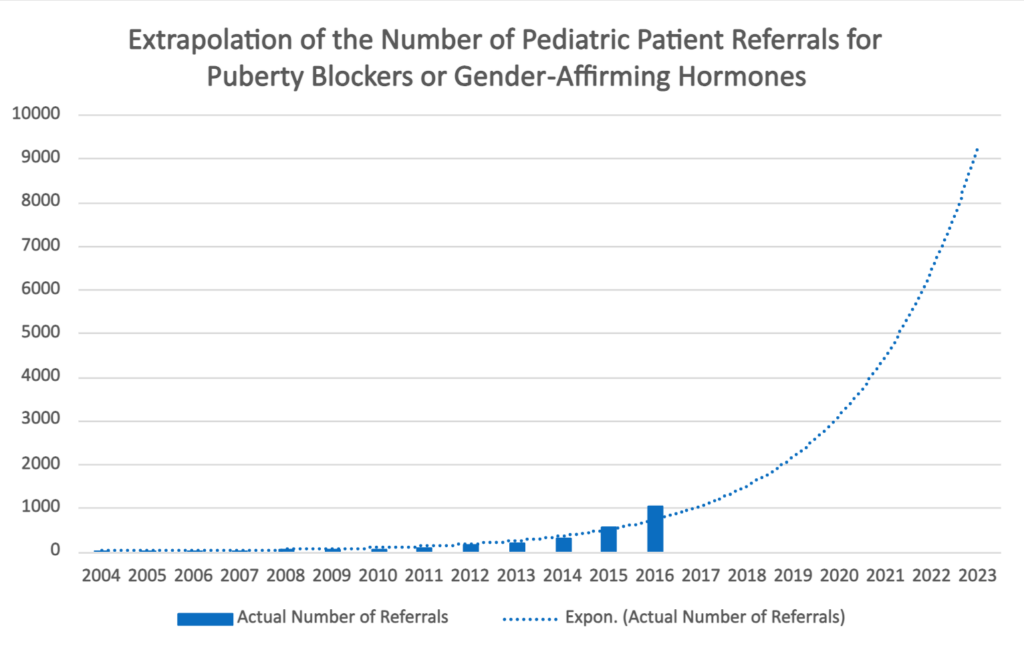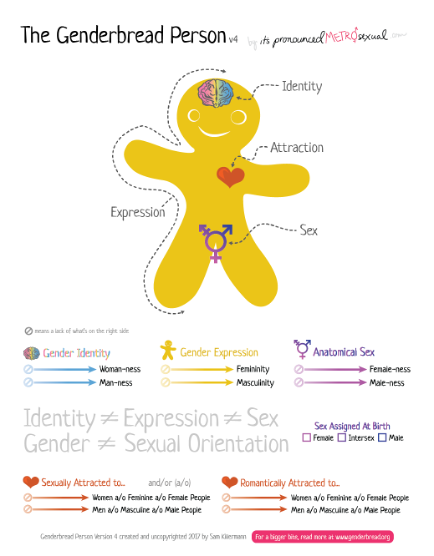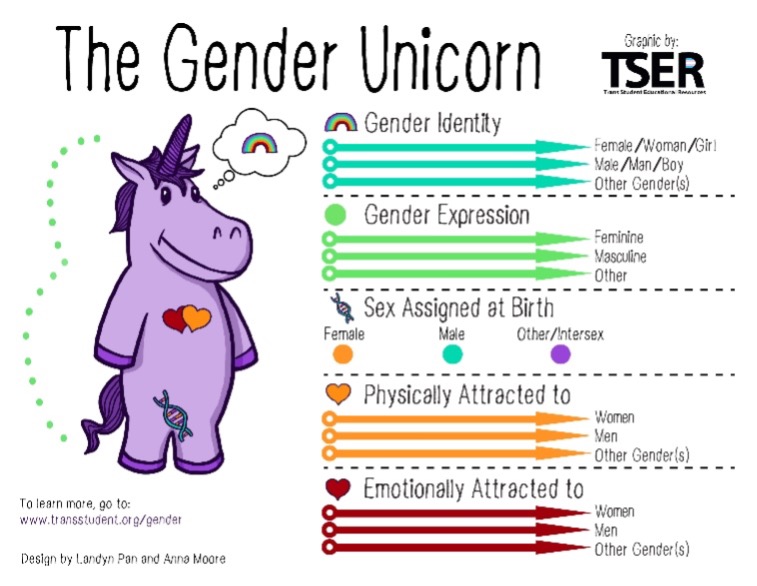A few months ago, we documented the exponential growth in the number of children who question their gender and seek to medically transition. Based on the “Trans Youth Can!” study’s figures from 2004-2016, we extrapolated that there may be as many as 10,000 youth referred for puberty blockers and cross-sex hormones each year. And that doesn’t count those who are questioning their gender but either aren’t mature enough to begin medically transitioning or have chosen not to medically transition.

Why the exponential growth in trans-identifying youth? The Cass Review, a landmark review of the gender identity service in the UK that we discussed recently, states that gender dysphoria “like many other human characteristics, arises from a combination of biological, psychological, social and cultural factors.” So, there is no single cause of gender dysphoria. There are many factors at play. In this blog post, we explore the role of one of those factors – public education, which plays a major role in shaping children’s belief systems, including their understanding and experience of gender.
There is no single cause of gender dysphoria. There are many factors at play. In this blog post, we explore the role of one of those factors – public education, which plays a major role in shaping children’s belief systems, including their understanding and experience of gender.
SOGI in Schools
In 2016, the Vancouver-based ARC foundation created SOGI 123 in collaboration with the BC Ministry of Education, the BC Teachers’ Federation, local school districts, and LGBTQ organizations. ARC’s mission is “to foster Awareness, Respect and Capacity through SOGI-inclusive K-12 education.” SOGI stands for sexual orientation and gender identity.
SOGI 123 focuses on three things.
Policies and Procedures largely revolves around anti-bullying policies in schools. The BC Ministry of Education requires every school to adopt an anti-bullying policy that lists prohibited grounds for bullying. Prior to 2016, such policies listed gender, race, culture, and religion. But the provincial government added sexual orientation and gender identity to that list in 2016. By adding these terms, the provincial government co-opted schools into recognizing modern gender ideology and elevating gender identity above other identities or characteristics – body type, age, and ability, just to name a few.
Inclusive Environments mainly refers to pronouns, bathrooms, and extra-curricular activities. Teachers are encouraged to ask students for their preferred pronouns and use them. Bathrooms, changing facilities, and showers are redesigned to be gender neutral. Participation on boys’ and girls’ teams is based on students’ self-identification, not their biological sex.
Teaching Resources are offered by ARC to help teachers teach gender ideology in every subject and every setting at school. For example, one lesson plan designed for grade 2, 3, 4, or 5 teaches students to reject all stereotypes, be true to themselves, and celebrate gender freedom. Other lessons plans suggest that teachers read books like I am Jazz that promote and normalize the idea that a boy could be trapped in a girl’s body.
The ARC foundation now boasts that SOGI 123 had been adopted by all 60 public school districts in British Columbia and reaches over 2500 educators. While it began in BC, ARC’s networks are growing to the Prairies, the Maritimes, and Yukon. It is funded by the Government of BC and the Government of Canada.
In the central and eastern parts of the country, the Canadian Center for Gender and Sexual Diversity aims to defend “gender and sexually diverse communities” through education, research and advocacy. In 2022-23, they boasted of delivering 200 presentations on topics such as comprehensive sexuality education, intersectionality, and diversity, working in 100 schools, and formally partnering with 26 school boards. Although located in Ontario, the Center claims to reach into the Maritime provinces and Saskatchewan as well.
The Canadian Center for Gender and Sexual Diversity is frank about its view of education. “Education is advocacy: it is widespread and helps us all learn about each other and our unique experiences of privilege and oppression so that we can build an equitable, accessible, participatory and rights-based world without discrimination together.”
Of course, if you see education as advocacy – one might call it indoctrination – there is no reason to stop with promoting gender ideology. In its Pride Pledge, the Center expands their list of advocacy topics to include racism, misogyny, and ableism, and insists that everyone who disagrees with them is a fascist: “Whether at their school, local library or their city council, trans youth have been targeted relentlessly by transphobic and fascist rhetoric that aims to extinguish them from public spaces… This pushback from the far-right displays a key facet of their political organizing; using racism and misogyny as tools to consolidate white power. Regardless of whether the tool is ableism (i.e. anti-mask and anti-vax rhetoric), racism, or transphobia the goal is always the same — mobilize the cultural majority to dehumanize and eradicate people who are a “threat” to Canada’s white, non-disabled, and cis-hetero norms” (emphasis added).
The Canadian Center for Gender and Sexual Diversity isn’t an organization supported by regular, grassroots Canadians. It is funded by arms of all three levels of government: the Government of Canada (Health Canada, the Canadian Department of Justice, the Canadian Department of Heritage) the Government of Ontario (Ministry of Education, Youth Opportunities Fund), and the City of Ottawa.
These organizations support and teach the confused anthropology of the Genderbread Person and the Gender Unicorn created by gender ideology advocates in the United States.


These cartoons teach that gender identity is separate from sex and that sex, gender identity, gender expression, and sexuality are all variants that fall somewhere along a continuum. They teach children that everyone is some combination of male, female, or other. Identity and expression, they teach, is solely up to individual choice and assertion. It is not connected to biological sex in any way. Sex is not a foundational and unchangeable biological reality, but a mere label “assigned at birth”. Gender stereotypes are oppressive, false, and constraining.
If we truly want to Let Kids Be, that doesn’t just mean banning active interventions like hormone therapies to change the body. It also means removing active interventions like promoting modern gender ideology in schools.
Impact on Students
If this understanding around gender identity is what is being taught in schools (as it is in all 60 public school districts in British Columbia), is it any wonder that an increasing number of young people are confused about their gender? Plenty of adults are confused about all the modern categories of identity and what they mean. Do we expect first graders to understand better?
The way that Canadian schools are teaching gender these days is analogous to throwing out the rules of algebra in mathematics, grammar in English, or notation in music and replacing it with the suggestion to just compute, write, and play according to the heart. That doesn’t work. Understanding reality in those subjects is indispensable.
So too when it comes to gender. Understanding gender’s connection to biological sex puts boys and girls on the road to success. Ignoring these connections sets them on a road of questioning. This questioning and confusion can lead to significant distress or dysphoria and prompt students to socially transition (to adopt new pronouns, cross-dress, conform to the opposite sex’s stereotypes). For many kids, this social transition demands the next step: medical transitioning.
If we truly want to Let Kids Be, that doesn’t just mean banning active interventions like hormone therapies to change the body. It also means removing active interventions like promoting modern gender ideology in schools.
We encourage you to reach out to your provincial MLA or MPP as well as your provincial education minister and ask them to remove harmful gender ideology from public schools.
